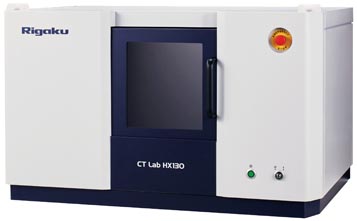SANDSTONE GRAIN SIZE ANALYSIS
About the sample: Sandstone
Sandstone is a clastic sedimentary rock composed mainly of sand-like silicate grains. There is a lot of void or pore space between those grains, and sandstones can contain petroleum in that space. The porosity, pore network, and permeability are important parameters that indicate how well or easily you can extract petroleum from sandstones. X-ray CT (computed tomography) is one of the very effective techniques to study those parameters.
Analysis procedure
- In this example, a sandstone core (Idaho Gray) was scanned using a micro-CT scanner, CT Lab HX.
- The resulting image was segmented into sand grains and void space.
- The individual grains were separated and grain size distribution was analyzed.
1. CT scan
The middle part of the Idaho Gray 1/3" core sample was scanned to produce the 3D grayscale CT image. A 3D rendered CT scan is shown on the right.
The gray level in CT data represents the relative density. The sand grains appear in light gray while the pore space (air) appears black.
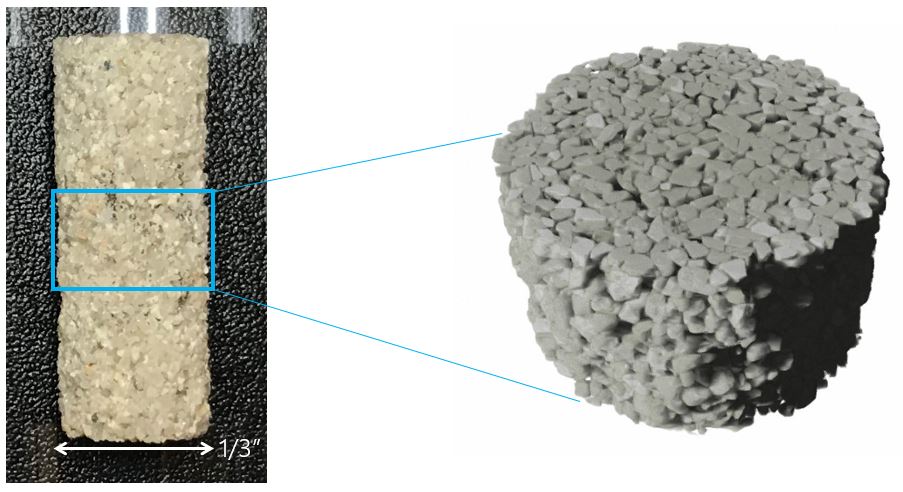
2. Image segmentation
The Idaho Gray CT image was segmented into sand grains and void space using the gray-level thresholding method. The individual grains were separated using the watershed transformation. The 3D rendering of the void space is shown in the figure.

3. Porenetwork analysis
The grain sizes were calculated from the object separation results. The grains are color-coded from less than 5E+7 cubic microns (purple to blue) to about 4E+8 cubic microns (orange to red).
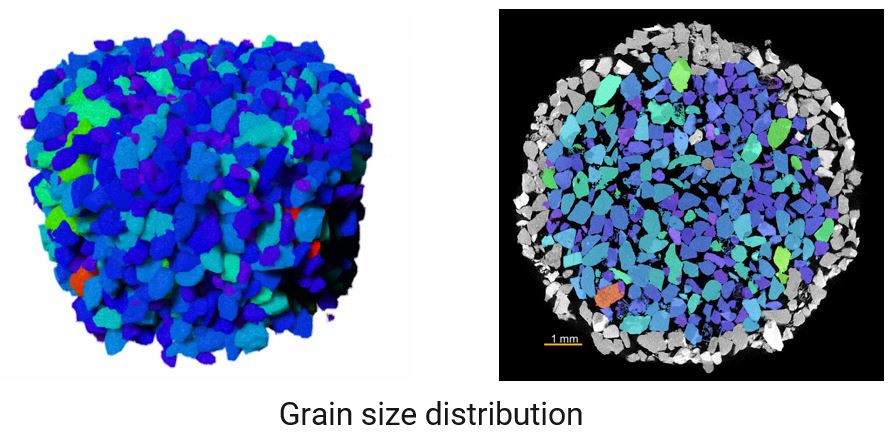
From the size distribution histogram, you can see that most grains are 1E+07 - 08 cubic microns in volume, and there are several grains over 3E+08 cubic micron size grains.
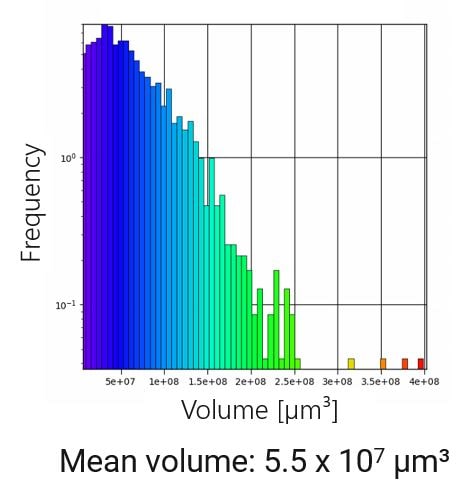
More Geological Application Examples
Watch an on-demand webinar about X-ray CT geological applications.

Sandstone grain size analysis
Application Note
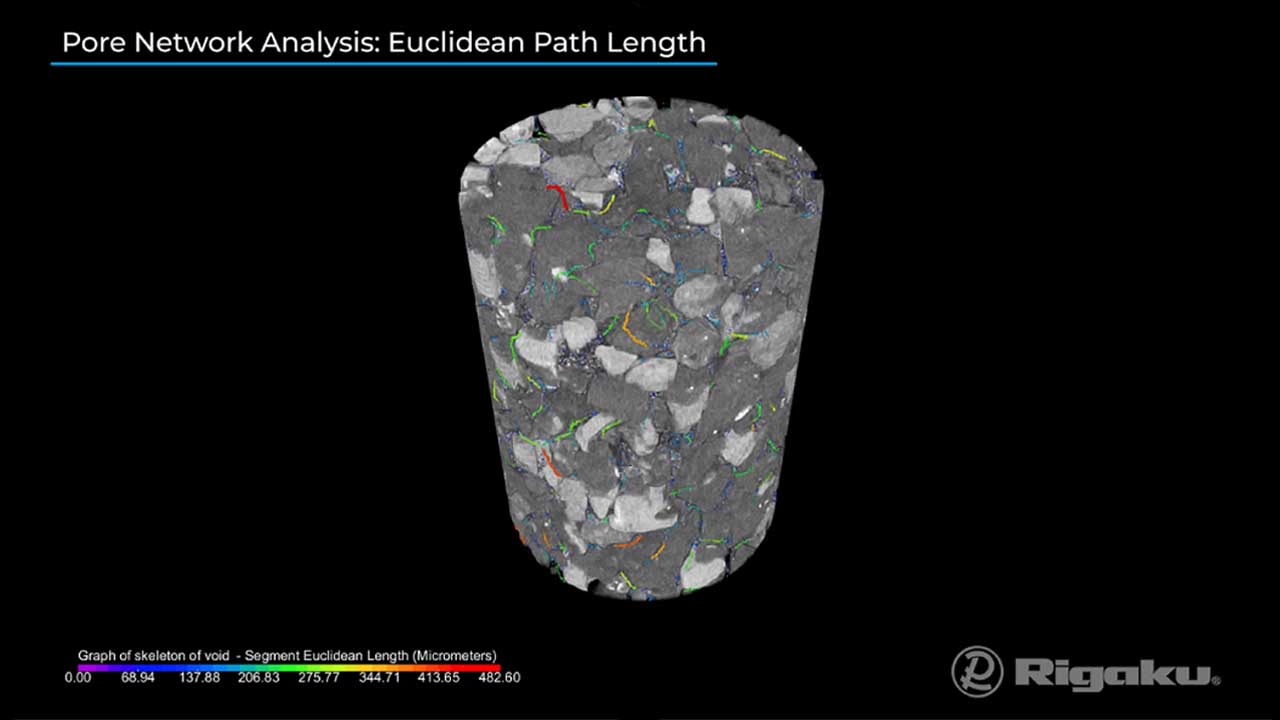
Sandstone pore network analysis
Application Note & Video
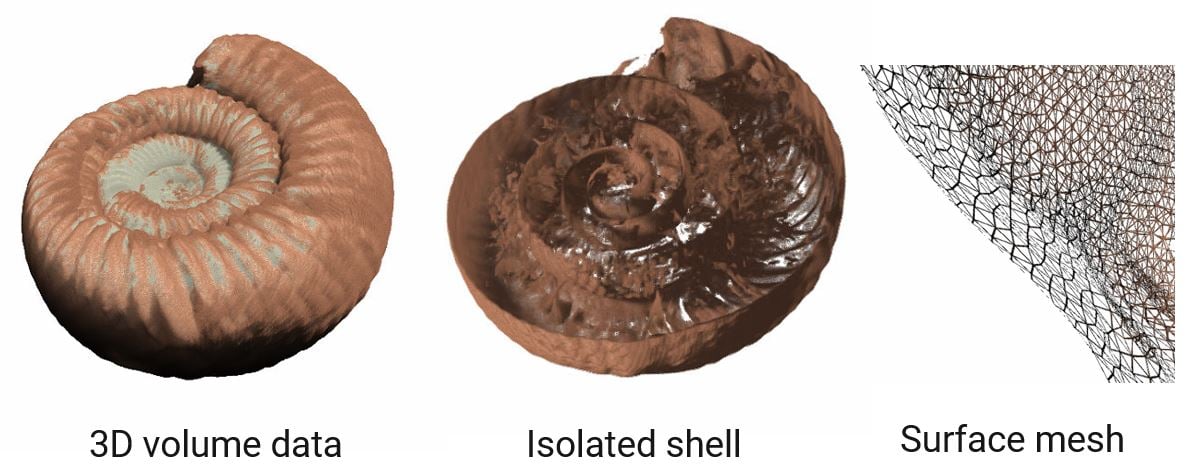
Ammonite fossil scan
Application Note

Carbonate porosity analysis segmentation comparison
Application Note
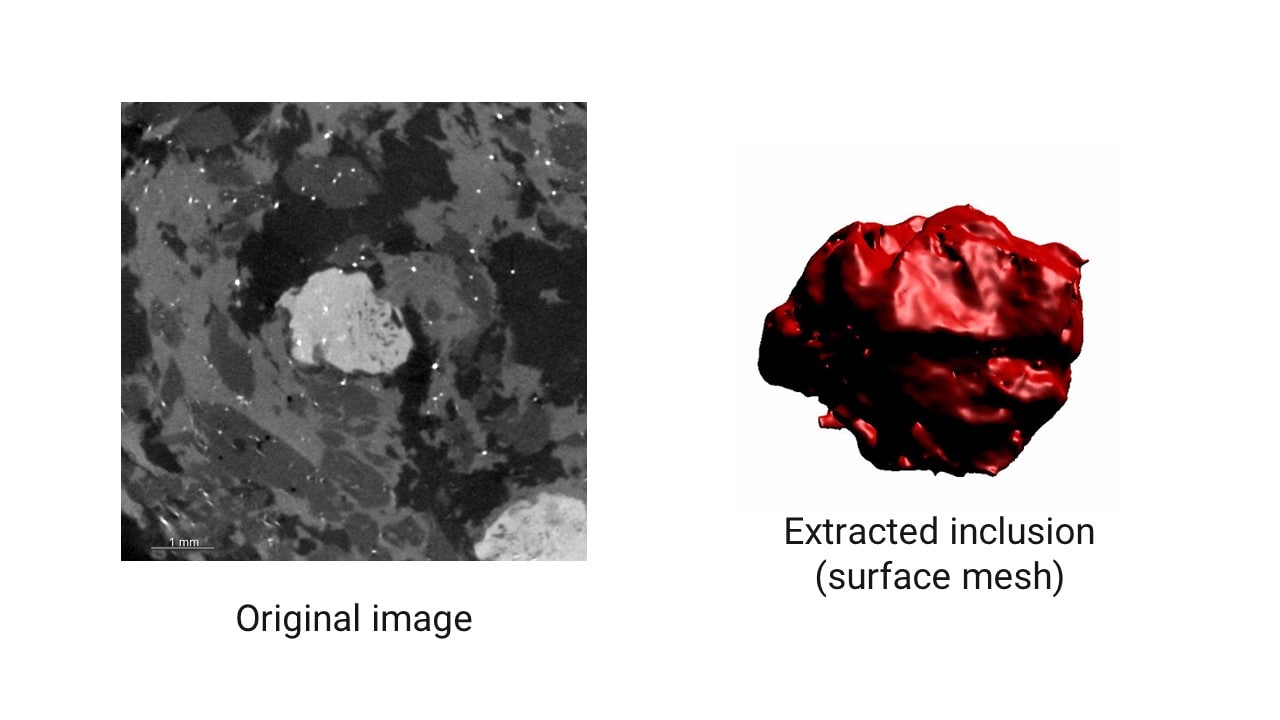
Granite phase fraction analysis
Application Note
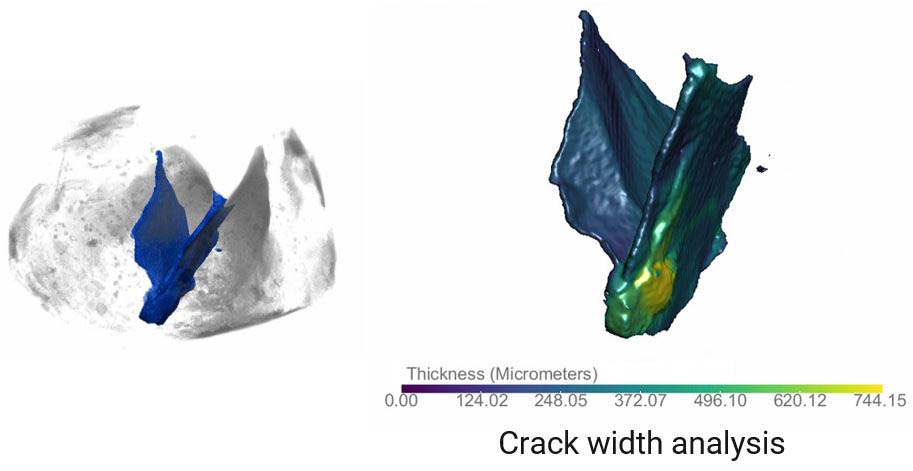
Rock crack analysis
Application Note
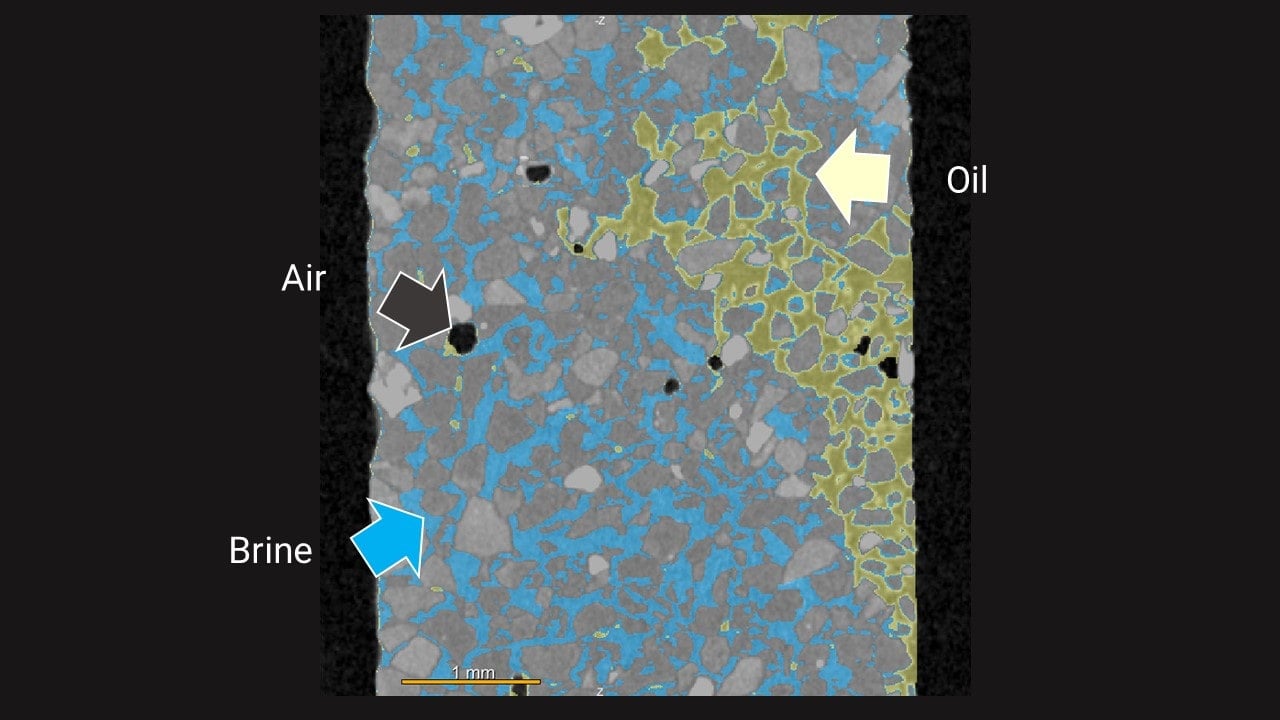
Sand oil and brine segmentation
Application Note
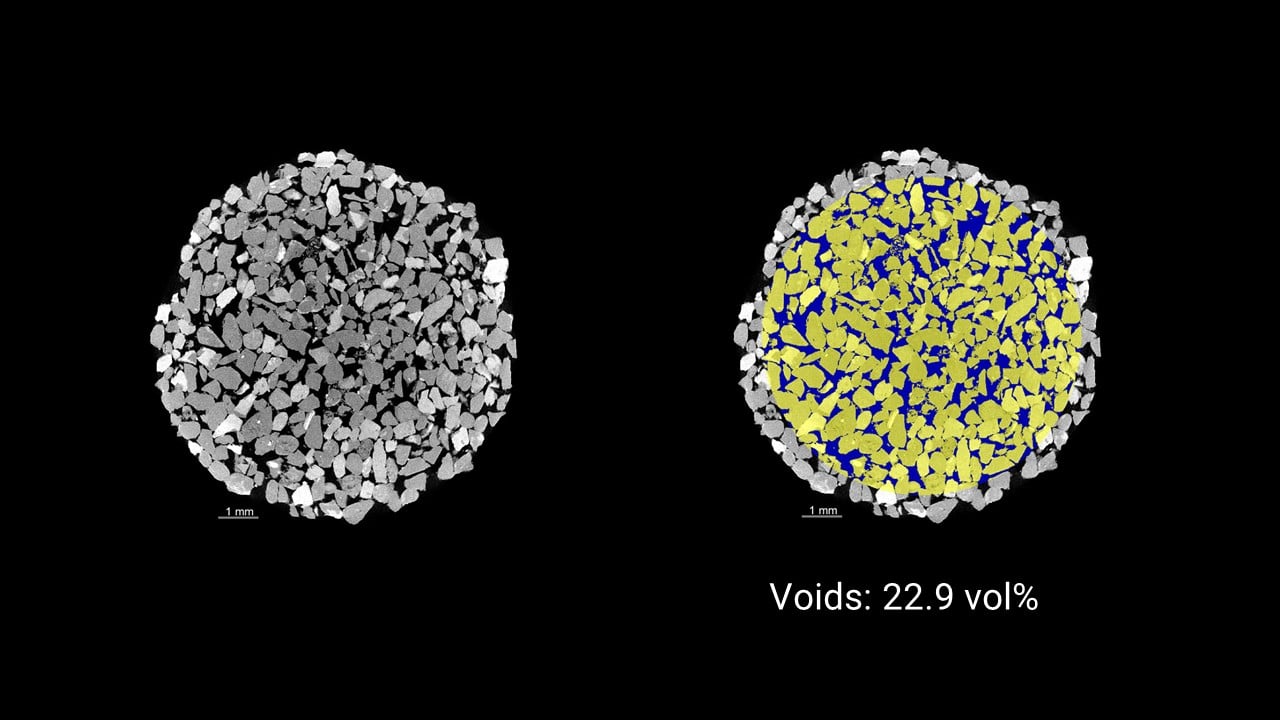
Sandstone porosity comparison
Application Note


